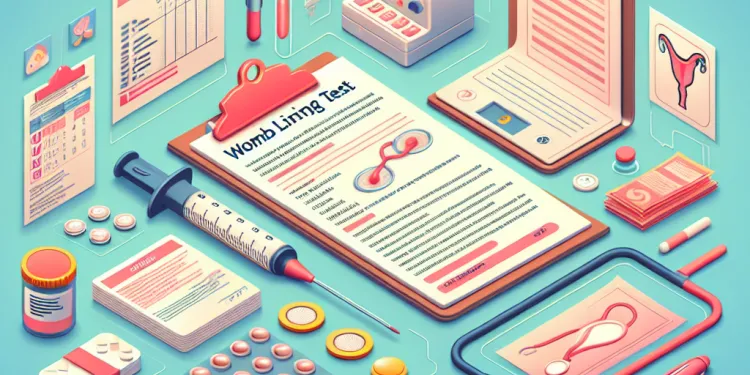
Find Help
More Items From Ergsy search
-
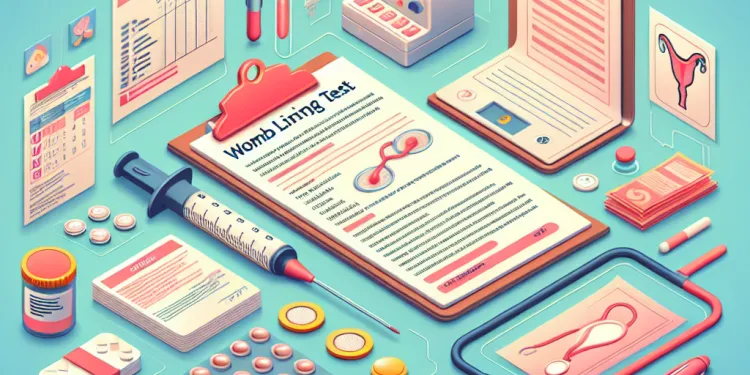
How should I prepare for a womb lining test?
Relevance: 100%
-

Is a womb lining test painful?
Relevance: 97%
-

What is the womb lining test?
Relevance: 95%
-
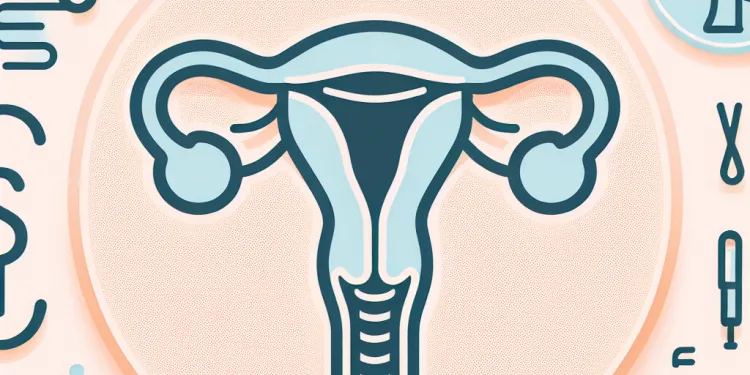
Does the womb lining test require any special preparation?
Relevance: 94%
-
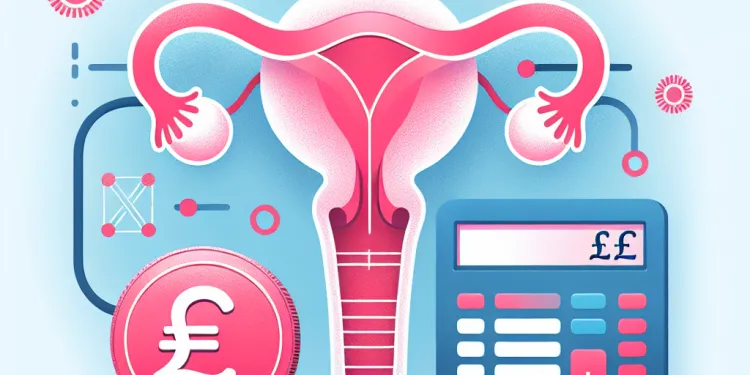
What is the Womb Lining test?
Relevance: 93%
-

How is a womb lining test conducted?
Relevance: 93%
-

Is the womb lining test covered by the NHS?
Relevance: 92%
-

Why is a womb lining test performed?
Relevance: 90%
-

Is the womb lining test covered by the NHS?
Relevance: 89%
-

Is the womb lining test painful?
Relevance: 89%
-

How is the womb lining test performed?
Relevance: 88%
-

Can a womb lining test detect cancer?
Relevance: 88%
-

Are there risks associated with a womb lining test?
Relevance: 88%
-

Are there any risks associated with the womb lining test?
Relevance: 87%
-

Can a womb lining test detect cancer?
Relevance: 87%
-

Why might someone need a womb lining test?
Relevance: 84%
-

What happens after a womb lining test?
Relevance: 81%
-

Is there any follow-up required after a womb lining test?
Relevance: 80%
-

Can I drive after the womb lining test?
Relevance: 80%
-

How long does it take to get results from a womb lining test?
Relevance: 77%
-

How long does it take to get results from a womb lining test?
Relevance: 75%
-

What does an evaporation line mean on a pregnancy test?
Relevance: 47%
-

How can I prepare for the DVSA Theory Test?
Relevance: 42%
-

What is a lot line adjustment?
Relevance: 33%
-

Are digital pregnancy tests more accurate than non-digital tests?
Relevance: 31%
-

How should I prepare for a facelift?
Relevance: 31%
-

How does a pregnancy test work?
Relevance: 31%
-
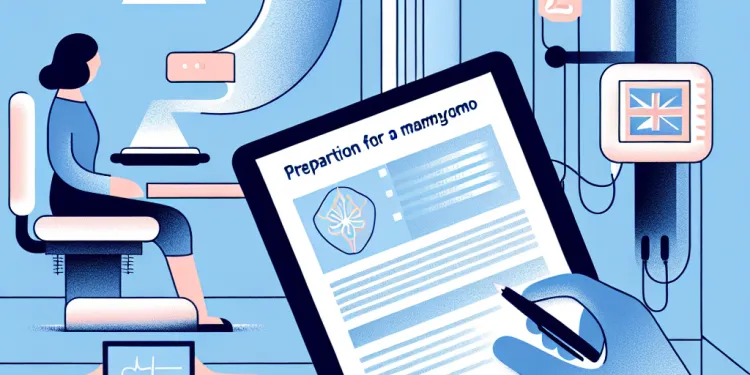
How do I prepare for a mammogram?
Relevance: 31%
-

What is a pregnancy test?
Relevance: 30%
-

How should I prepare for a C-section?
Relevance: 28%
-

What should I do if I get unclear results on a pregnancy test?
Relevance: 28%
-

What if my pregnancy test is positive?
Relevance: 28%
-

What is the DVSA Theory Test?
Relevance: 27%
-

How do I prepare for hip replacement surgery?
Relevance: 27%
-

When should I take a pregnancy test?
Relevance: 27%
-

What is the Hazard Perception Test?
Relevance: 27%
-

What is the pass mark for the Hazard Perception Test?
Relevance: 26%
-

Can exercises help with labor preparation?
Relevance: 26%
-

What is a stool DNA test?
Relevance: 26%
-

What can cause a false positive pregnancy test?
Relevance: 26%
Preparing for a Womb Lining Test (Endometrial Biopsy)
Understanding the Procedure
Before your womb lining test, also known as an endometrial biopsy, you should understand the procedure. It's a common test in the UK that involves collecting a small tissue sample from the lining of your uterus (endometrium) to check for abnormalities. This test helps diagnose conditions like abnormal bleeding, hormone imbalances, and even precancerous cells.Consult Your Healthcare Provider
Discuss with your GP or gynaecologist why the test is necessary. They will explain the procedure, any risks involved, and what the results could mean. This is also a good time to ask any questions you may have, including concerns about discomfort or aftercare.Schedule Wisely
Plan your test for a time when it won’t coincide with your menstrual period, unless otherwise directed by your doctor. Certain days of your menstrual cycle are better suited for accurate sampling. Your healthcare provider will instruct you on the best timing based on your individual health needs.Medication Considerations
Inform your doctor about any medications you’re taking. You may be advised to avoid specific medications, such as blood thinners or hormonal treatments, days before the procedure to reduce the risk of bleeding or other complications. Follow your doctor's instructions carefully.Prepare for Mild Discomfort
Take any prescribed medication or an over-the-counter pain reliever, like ibuprofen, about 30 minutes before the procedure to help minimise discomfort. Wear comfortable clothing to your appointment, and consider bringing sanitary pads as spotting is common afterward.Plan for Recovery
Understand that while most women can return to their normal activities soon after the test, you may experience cramping or light bleeding. Arrange for a short rest period post-procedure if needed. Avoid using tampons, douching, or having sexual intercourse for at least a few days as advised by your doctor.Aftercare and Results
Follow any aftercare instructions given by your healthcare provider. You’ll likely receive the results in a few weeks. If results are concerning, your doctor will discuss further diagnostic options or treatments. Remember, not all abnormal results mean you have a serious condition. Prepare thoroughly to ensure a smooth process and get the most accurate results from your womb lining test.Getting Ready for a Womb Lining Test
Understanding the Test
A womb lining test, or endometrial biopsy, helps doctors check the inside of your uterus. This test looks for problems like unusual bleeding or cells that might not be healthy. It is common in the UK.Talk to Your Doctor
Speak with your GP or women's doctor about why you need the test. They will tell you how it works and if there are any risks. Ask any questions you have, like if it might hurt or what to do after the test.Choose the Right Time
Plan your test when you are not on your period unless your doctor says otherwise. Some days of the month are better for the test. Your doctor will help you pick the best time.Think About Medicines
Tell your doctor about any medicines you take. You might need to stop taking some like blood thinners before the test to stay safe. Follow what your doctor says.Prepare for Some Discomfort
Take any medicine your doctor suggests, like ibuprofen, 30 minutes before the test to feel more comfortable. Wear comfy clothes, and bring sanitary pads because you might have some spotting later.Plan for After the Test
Most people can go back to normal things soon after the test. You might feel cramps or light bleeding. Take it easy if you need to. Don't use tampons, douche, or have sex for a few days as your doctor advises.Aftercare and Results
Listen to any care tips your doctor gives you. You will get your test results in a few weeks. If there’s something wrong, your doctor will talk about what to do next. Not all unusual results are serious. Prepare well, so the test goes smoothly, and you get the best results.Frequently Asked Questions
What is a womb lining test?
A womb lining test, also known as an endometrial biopsy, is a procedure used to take a small sample of tissue from the lining of the uterus for examination.
Why might I need a womb lining test?
You may need an endometrial biopsy to investigate abnormal menstrual bleeding, monitor hormone levels, or check for conditions like endometrial hyperplasia or cancer.
How should I prepare for a womb lining test?
Your doctor may advise you to avoid using tampons, douche products, and having intercourse for 24-48 hours before the test. Check with your doctor for specific instructions.
Can I eat and drink before a womb lining test?
You can usually eat and drink as normal unless your doctor provides specific instructions to do otherwise.
What should I wear on the day of the test?
Wear comfortable clothing and consider wearing a skirt or trousers that are easy to remove since you will need to undress from the waist down for the procedure.
Should I take pain medication before the test?
Speak with your doctor, but they may recommend taking over-the-counter pain relief like ibuprofen about an hour before the procedure to help reduce discomfort.
What should I do if I have my period on the test day?
Contact your healthcare provider for advice. They may need to reschedule the test based on the nature of your menstrual flow.
How long does the test typically take?
The procedure usually takes about 10 to 15 minutes, though you may be in the clinic for longer to allow for preparation and aftercare.
Will I be able to return to work after the test?
Most women can return to work or normal activities after the procedure, but you should consider taking it easy for the rest of the day if you experience cramping.
Are there any risks associated with the test?
Complications are rare, but risks can include infection, bleeding, or discomfort. Discuss any concerns with your healthcare provider beforehand.
What should I do if I experience severe pain after the test?
Contact your healthcare provider immediately if you experience severe pain, heavy bleeding, or any signs of infection such as fever.
How soon will I get the results from the test?
Results are typically available within a week to ten days. Your doctor will inform you when and how the results will be delivered.
Can I drive myself to and from the appointment?
Yes, you can usually drive yourself, but you may want to arrange for someone to accompany you if you're concerned about discomfort after the procedure.
How will I feel during the test?
You may feel some cramping or discomfort during the procedure, similar to menstrual cramps, but the sensation varies for each person.
What follow-up care might be needed after the test?
Follow any instructions provided by your healthcare provider. Use sanitary towels instead of tampons if needed and avoid sexual intercourse for a short period as advised.
What is a womb lining test?
A womb lining test is a check-up for the inside part of a woman's belly where babies grow.
Doctors do this test to see if the womb lining is healthy. The womb lining is sometimes called the endometrium.
Doctors might do this test if someone has trouble having a baby or has tummy pain. This test can help find out why.
To learn more, you can ask your doctor questions. You can also use pictures or videos to help understand better.
A womb lining test is a way to check the inside of a woman's womb. It's also called an endometrial biopsy. The doctor takes a tiny piece from the inside lining of the womb and looks at it closely.
Why do I need a womb lining test?
You might need a womb lining test to check if your womb is healthy. The womb is where a baby grows during pregnancy.
This test can help find out why you might have problems like heavy bleeding or trouble getting pregnant.
Doctors use the test to look at the inside of your womb to make sure everything is okay.
If you or someone you know finds reading hard, try using pictures or videos to explain things. Ask someone you trust to help read this with you.
You might need a test called an endometrial biopsy. This test helps doctors find out why there is unusual bleeding during periods. It also checks hormone levels and looks for problems like endometrial hyperplasia or cancer.
How do I get ready for a womb lining test?
A womb lining test looks at the inside of your womb. Here's how you can get ready:
- Listen to what the doctor says.
- Ask your questions.
- Write down what the doctor tells you.
- Use a calendar to remember the test day.
- Ask someone to come with you if it helps.
Using simple reminders like notes or alarms can help you remember important steps.
Your doctor might tell you not to use tampons, douche products, or have sex for 1 to 2 days before the test. Ask your doctor if you have any questions.
Can I eat or drink before a womb lining test?
Before your test, ask the doctor if you can eat or drink. Some tests need an empty tummy.
Helpful Tip: Make a list of questions for your doctor.
You can eat and drink like normal. But if your doctor tells you to do something special, follow what they say.
What clothes should I wear for the test day?
Wear clothes that feel comfy. A skirt or trousers that are easy to take off is good. You will need to take off your clothes from the waist down for the procedure.
Can I take pain medicine before the test?
Talk to your doctor. They might suggest taking some medicine that you can buy at the store. This medicine is called ibuprofen. It can help you feel less pain if you take it about one hour before you go for the treatment.
What can I do if I get my period on the test day?
If you have your period on the day of your test, here are some tips:
- Bring extra pads or tampons with you.
- Wear comfortable clothes.
- Tell a teacher if you don't feel well.
- Take deep breaths to help you relax.
It might help to talk to a friend or adult you trust about how you feel.
Talk to your doctor or nurse for help. They might need to change the test date because of your period.
How long does the test usually take?
The test often takes about the same time. Most tests take around 30 minutes to 1 hour. Ask someone if you need help to understand the time better. You can also use a timer or a clock to keep track of time during the test.
The procedure usually takes a short time, about 10 to 15 minutes. But you might be at the clinic for longer because of getting ready and resting afterwards.
Can I go back to work after the test?
You might be able to go back to work after your test. It depends on how you feel.
If you feel tired or unwell, it might be good to rest.
Ask your doctor if you are not sure.
Most women can go back to work or their normal activities after the procedure. But, if you feel cramps, it is a good idea to rest for the rest of the day.
Is the test safe?
The test is safe for most people.
But some people might feel uncomfortable.
If you are worried, ask a doctor or nurse.
They can help you feel better and answer your questions.
Problems don't happen often, but sometimes things can go wrong. These can include getting an infection, bleeding, or feeling some pain. Talk to your doctor or nurse about anything you are worried about before you have the procedure.
What can I do if I feel a lot of pain after the test?
Call your doctor right away if you have bad pain, lots of bleeding, or if you feel sick with a fever.
When will I know my test results?
You usually get the results in about one week to ten days. Your doctor will tell you when and how you will get the results.
Can I drive myself to the appointment and back home?
Yes, you can usually drive yourself. But if you think you might feel sore or unwell after, you can ask someone to come with you. They can help you if you need it.
How will I feel during the test?
During the test, you might feel different emotions. You could feel:
- Nervous or a bit scared
- Excited to do your best
- Confident if you have practiced
- Worried, but that's okay
Remember, it's normal to feel these things. Here are some tips to help you:
- Take deep breaths to stay calm
- Ask for help if you need it
- Take your time and go at your own pace
- Think positive thoughts
You might feel a little pain or a sore feeling during this procedure. It can feel like the tummy pain some people get during their period. But remember, everyone feels it differently.
What care do you need after the test?
After you have your test, you might need extra help. Ask your doctor or nurse what you should do next. They can tell you if you need more visits or medicine.
Listen to what your doctor tells you to do. Use pads instead of tampons if you need to. Do not have sex for a while until your doctor says it's okay.
Useful Links
- Ergsy carfully checks the information in the videos we provide here.
- Videos shown by Youtube after a video has completed, have NOT been reviewed by ERGSY.
- To view, click the arrow in centre of video.
- Most of the videos you find here will have subtitles and/or closed captions available.
- You may need to turn these on, and choose your preferred language.
- Go to the video you'd like to watch.
- If closed captions (CC) are available, settings will be visible on the bottom right of the video player.
- To turn on Captions, click settings .
- To turn off Captions, click settings again.
More Items From Ergsy search
-

How should I prepare for a womb lining test?
Relevance: 100%
-

Is a womb lining test painful?
Relevance: 97%
-

What is the womb lining test?
Relevance: 95%
-

Does the womb lining test require any special preparation?
Relevance: 94%
-

What is the Womb Lining test?
Relevance: 93%
-

How is a womb lining test conducted?
Relevance: 93%
-

Is the womb lining test covered by the NHS?
Relevance: 92%
-

Why is a womb lining test performed?
Relevance: 90%
-

Is the womb lining test covered by the NHS?
Relevance: 89%
-

Is the womb lining test painful?
Relevance: 89%
-

How is the womb lining test performed?
Relevance: 88%
-

Can a womb lining test detect cancer?
Relevance: 88%
-

Are there risks associated with a womb lining test?
Relevance: 88%
-

Are there any risks associated with the womb lining test?
Relevance: 87%
-

Can a womb lining test detect cancer?
Relevance: 87%
-

Why might someone need a womb lining test?
Relevance: 84%
-

What happens after a womb lining test?
Relevance: 81%
-

Is there any follow-up required after a womb lining test?
Relevance: 80%
-

Can I drive after the womb lining test?
Relevance: 80%
-

How long does it take to get results from a womb lining test?
Relevance: 77%
-

How long does it take to get results from a womb lining test?
Relevance: 75%
-

What does an evaporation line mean on a pregnancy test?
Relevance: 47%
-

How can I prepare for the DVSA Theory Test?
Relevance: 42%
-

What is a lot line adjustment?
Relevance: 33%
-

Are digital pregnancy tests more accurate than non-digital tests?
Relevance: 31%
-

How should I prepare for a facelift?
Relevance: 31%
-

How does a pregnancy test work?
Relevance: 31%
-

How do I prepare for a mammogram?
Relevance: 31%
-

What is a pregnancy test?
Relevance: 30%
-

How should I prepare for a C-section?
Relevance: 28%
-

What should I do if I get unclear results on a pregnancy test?
Relevance: 28%
-

What if my pregnancy test is positive?
Relevance: 28%
-

What is the DVSA Theory Test?
Relevance: 27%
-

How do I prepare for hip replacement surgery?
Relevance: 27%
-

When should I take a pregnancy test?
Relevance: 27%
-

What is the Hazard Perception Test?
Relevance: 27%
-

What is the pass mark for the Hazard Perception Test?
Relevance: 26%
-

Can exercises help with labor preparation?
Relevance: 26%
-

What is a stool DNA test?
Relevance: 26%
-

What can cause a false positive pregnancy test?
Relevance: 26%


